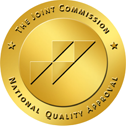What is Osteoarthritis?
Osteoarthritis is a form of arthritis which affects the joints in the body. It is the most popular form of arthritis. In fact, in the United States today, over 21 million people are affected by it. Other known names for this type of arthritis include degenerative joint disease, osteoarthrosis, degenerative arthritis, and wear-and-tear arthritis. Pain treatment centers may be helpful for someone suffering from osteoarthritis or other forms of pain such as fibromyalgia.
This type of arthritis occurs in the body when the cartilage surrounding the joints starts to wear down. Cartilage, a type of tissue, acts as a cushioning for the joints which allows easy movement. If this cartilage in the body disappears then joints often become stiff, swollen, painful, and bones often collide and scrape together. Joints in the hips, hands, spine, and knees are most susceptible to developing osteoarthritis. In most cases, only one joint in the body is affected.
Over time, the condition of osteoarthritis will become more and more of a problem, especially if it is not recognized in its early stages. Numerous treatments are available, although as of yet there is still no ultimate cure for osteoarthritis. Almost anyone can get this type of arthritis but it is more common in the elderly. The exact cause of osteoarthritis is unknown. Seek pain rehab before your pain caused by osteoarthritis increases, causing permanent disability. This type of pain treatment can be found at one of many pain residential centers.
Symptoms of Osteoarthritis
Over times, most cases of osteoarthritis will worsen. The most common places for signs of osteoarthritis to occur include the hips, hands, spine, and knees. Unless injury has occurred elsewhere in the body, joints in the shoulder, wrists, and jaw are typically not affected. Symptoms associated with osteoarthritis include:
- Swelling
- Stiffness (often worse in the morning)
- Decrease in mobility (e.g. limping, difficulty walking up stairs)
- Severe pain
- Rubbing together of the bones
- Numbness
- Pain which worsens after exercise
- Poor flexibility
- Joints which are tender to the touch
- Pinched nerves
- Bone spurs (Heberden’s nodes or Bouchard’s nodes)
- Redness
- Muscle atrophy
Pain treatment centers can help someone suffering from joint pain in a number of different areas and offer therapy and specialized programs to patients at their pain rehab facilities.
Causes of Osteoarthritis
The exact cause of osteoarthritis is unknown at this time. However, there are several known risk factors which may contribute to the development of osteoarthritis. Together these factors greatly increase a person’s chance of developing this form of arthritis. By recognizing and doing your part in preventing possible risk factors, you may reduce your chances of developing osteoarthritis. Ten popular risk factors are:
- Genetics – certain problems which arise as a result of one’s family history may increase the risk of osteoarthritis.
- Injury – sustaining an injury to certain joints or putting a great deal of strain on a joint puts one at a greater risk for osteoarthritis.
- Poor muscular strength – if someone has weak muscles they cannot properly support the joints in the body, which may in turn increase their risk of osteoarthritis.
- Presence of disease – certain diseases such as rheumatoid arthritis and Paget disease increase the risk of someone developing osteoarthritis.
- Female gender – women tend to be more susceptible to developing this form of arthritis.
- Obesity – being overweight has been known to increase the risk of this form of arthritis as the extra weight put on the joints causes straining in the body.
- Unusual bone structure – the presence of deformities in the bones of the body can sometimes encourage the beginnings of osteoarthritis.
- Lack of nutrition – diseases caused by a lack of nutrition in the body will often lead to the development of this type of arthritis.
- Diabetes – people with diabetes often have an increased risk of developing osteoarthritis because of endocrine and neuropathic problems which can develop.
- Getting older – most cases of osteoarthritis appear in people over age 40 or 50.
Managing Osteoarthritis
Today, there is still no cure for osteoarthritis. There are however, a variety of treatments which may help in reducing pain and severity of the condition. The sooner you discover evidence of osteoarthritis, the better. Surgery and other extreme pain treatments are available for osteoarthritis, but simpler treatments are often recommended before taking such drastic measures. Types of treatment and self-help methods recommended for those with this condition include:
- Adjusting daily tasks to make them easier
- Demonstrating appropriate posture
- Pain creams
- Physical therapy sessions to strengthen muscles around the joint
- Cortisone shots for the joint
- Joint replacement surgery
- Exercise
- Braces to stabilize joints
- Weight reduction
- Adequate rest (especially of painful joints)
- Nutritious diet
- Heating pads and ice packs
- Certain medications
- Occupational therapy
- Bone fusion or realignment
- Use of larger muscles when carrying things
- Appropriate shoes
- Arthroscopic surgery
- Chiropractic treatment
- Osteotomy
If you or a loved one suffers from pain caused by osteoarthritis or a variety of other conditions, you may want to consider seeking out pain rehab at a beneficial pain treatment center. These pain treatment facilities have been proven very effective in pain management and most offer a number of specialized programs to fit your individual needs.




